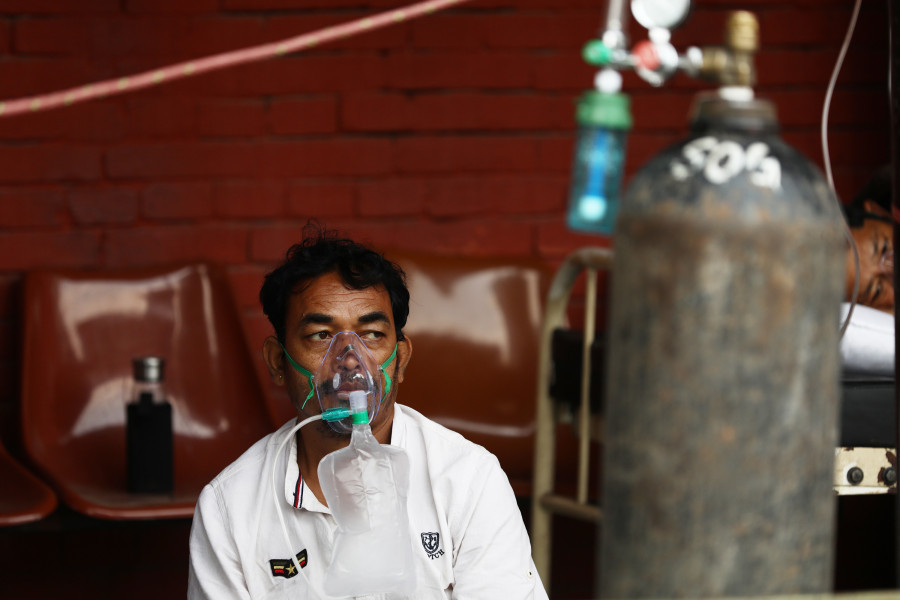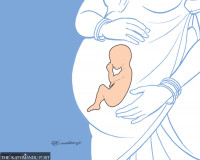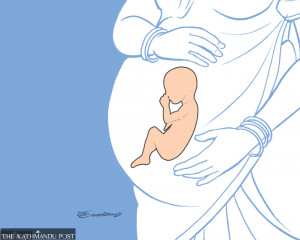Health
Despite increase in health budget, preparations for crisis were sorely lacking
Plans to set up enough oxygen plants, ICU beds and to procure equipment remained only on paper. Less than 4 percent of Covid-19 capital budget has been spent.
Prithvi Man Shrestha
The second wave of the Covid-19 pandemic has left authorities scrambling.
As new infections continue to rise alarmingly, there is an acute shortage of oxygen all over the country. Hospitals have also run out of intensive care beds and ventilators.
With different parts of the world witnessing second waves last year, public health experts had warned that Nepal too could face such a situation.
Even the government had foreseen that adequate oxygen supply would be necessary for the treatment of Covid-19 patients even if not of the scale that is needed at the moment.
The Health Sector Emergency Response Plan for Covid-19 prepared in May last year states, “Province-wise estimation of the medicine, supplies [with a particular focus on oxygen supply], equipment and infrastructure will be developed based on the scenario and incorporated in current epidemiological situations.”
The plan stressed ensuring adequate production and distribution of oxygen to hospitals, prioritising local production of personal protective equipment and estimating adequate supply oxygen along with PPEs, blood gas analyser, ventilators, ICUs, essential drugs and other essential items, as per the World Health Organization guidelines.
But the needs were never fulfilled and the plans to acquire them remained only on paper.
Instead, when the country started to feel the heat, the government sought oxygen, antiviral drugs and intensive care beds from India, which itself was dealing with one of its biggest humanitarian crises and was looking to various countries for support.
Data also suggests the government did little in adding intensive care unit beds, ensuring oxygen supplies and purchasing ventilators.
The government had planned to add 2,000 high dependency unit (HDU) beds last year. But, there were just over 1,400 ICU beds and 566 ventilators in government hospitals until last week, according to the Health Ministry.
Dr Roshan Pokharel, chief specialist at the Ministry of Health and Population, told the Post in late April that only around 500 new ICU beds and around 300 new ventilators, with around 250 of them received in donations, had been added in government hospitals as of March.
He said oxygen plants could not be added to the expected level.
Officials said that even though a budget was allocated to establish oxygen plants in large hospitals having beds above 100 in each province, they were set up only in a few of them.
“New oxygen plants were set up at Bir Hospital, Kanti Hospital, National Trauma Centre, Bheri Hospital, Koshi Hospital and Nepal Police Hospital among others after the first wave of Covid-19,” said Dr Madan Upadhyay, a senior official at the Department of Health Services.
As for oxygen, officials said they had not anticipated that the second wave would be so virulent although they were aware of a potential second wave.
“Only 20 percent of the current oxygen demand had been enough for Covid-19 patients during the first wave of pandemic last year,” said Upadhyay.
But lacklustre preparations of the government are evident also from the fact that a number of major government hospitals in Kathmandu Valley, including Bir Hospital and Tribhuvan University Teaching Hospital, didn’t maintain their existing oxygen plants.
Of the three oxygen plants at the Teaching Hospital, the plant with a capacity of producing 1,000 litres per minute was not maintained for a year citing the lack of a kit. It was operating only two smaller plants with the capacity of 500 litres per minute until recently.
According to former finance secretary Rajan Khanal, there is a reason behind this failure.
“There is a tendency of keeping the plants and equipment idle as long as they can be outsourced to the private sector for personal benefits,” he said.
The failure in preparing necessary health infrastructure is not because of the lack of funds. There has been significant allocation of budget in the health sector in the fiscal year 2020-21.
The government allocated Rs90.69 billion for the health sector for this fiscal year, which is around 32 percent more than that in the fiscal year 2019-20 when Rs68.78 billion had been set aside.
For Covid-19 alone, a recurrent budget of Rs7.61 billion and capital budget of Rs647.85 million has been allocated but only 48.88 percent of the recurrent budget and 3.44 percent of the capital budget, which covers constructing hospitals, managing hospital beds, and procuring equipment, has been spent, according to the Financial Comptroller General Office.
Regular budgets allocated for health and other ministries to build health infrastructure don’t come under the Covid-19 budget heading.
Former secretary Khanal said that some of the capital budget remained unspent because developing physical infrastructure takes time and government agencies also often struggle to procure modern health equipment.
“Local governments also spent much of their budget preparing isolation centres instead of developing infrastructure for serious Covid-19 patients and there is now a shortage of infrastructure for treatment,” he said.
Besides the regular budget, there is another source for funds—the Covid-19 Fund managed by the prime minister’s office which collects donations and distributes the resources to control the pandemic and to treat the infected people.
But no funds have been released from the Covid-19 Fund for the last four months even though calls for expanding the health infrastructure are growing.
On January 27, a board of the Covid-19 fund had decided to provide Rs36 million for necessary infrastructure for dead body management, Rs25 million for an oxygen pant at the Rapti Health Science Academy, Rs22 million for six ICU beds with ventilators at Civil Service Hospital, Kathmandu, and Rs8.5 million for installing oxygen refilling plant in Sudurpaschim Province, among other allocations.
“No extra budget has been released from the fund for the last three months,” Gyanendra Poudel, spokesperson for the Financial Comptroller General Office, told the Post in a recent interview.
The fund currently has Rs406 million, according to this office, which keeps records of the government’s income and expenditures. Till January 27, a total of Rs1.48 billion was released from this fund.
Despite huge budget allocation, the federal government’s slow move to acquire the supplies essential for tackling the pandemic can also be gauged from the fact that it hardly procured any ventilators that have been distributed since the pandemic began.
“We distributed 209 ventilators to different hospitals after the first wave, most of them donated ones,” Upendra Dhungana, chief of the logistics management division of the Department of Health Services, told the Post in late April.
He, however, claimed that ventilators were procured at the hospital level and some hospitals directly got the ventilators in donations. For instance, Koshi Hospital received 20 ventilators recently.
In yet another instance of failure, the recommendation in the government report ‘Responding to Covid-19: Health Sector Preparedness, Response and Lesson Learnt for keeping 50 percent of the supplies in stock while distributing the remaining according to the needs of Level I, Level II and Level III hospitals was not followed.
In fact, according to Dr Pokharel, a recent meeting of the CCMC had ordered the Department of Health Services to procure 50 ventilators immediately.
The report released in March this year says that a functional logistics system needs to be a top priority for the timely delivery of medical supplies.
“It is absolutely essential to procure sufficient quantities [while maintaining quality] of medical supplies, and ensure a secure supply chain. Stable supply chains are necessary to ensure timely supplies during crises,” it states.
Dhungana of the Department of Health Services said that considering the need for oxygen to treat Covid-19 patients, the department had distributed over 900 oxygen cylinders this fiscal year before the second wave hit the country.
Oxygen manufacturers, however, say they need 20,000 more.
“Preparations are also underway to install a liquid oxygen refilling plant at Bir Hospital,” Dhungana said.
But lack of oxygen remains the biggest obstacle to treating patients at the moment.
“Over 30 beds in my hospital are unoccupied but we cannot take new patients,” said Kumar Thapa, a promoter of Alka Hospital, Lalitpur.
Nepal Medical College chairperson Dr Bhola Rijal also said that his hospital was not in a position to admit new patients due to inadequate supply of oxygen.
“There are 130 beds in our hospital but we had around 70 patients of Covid-19 as of Friday. We have the capacity to accomodate more patients but we cannot take them due to the shortage of oxygen,” Dr Rijal said.
On March 11, the Jorpati, Kathmandu-based hospital published a notice asking Covid-19 patients to get discharged citing that oxygen supply would last only till 4pm that day.
Experts blame the government’s utter failure for the current situation.
“I hear that the government just recently collected data on the oxygen plants in the country and the availability of oxygen from them,” said Dr Binjwala Shrestha, assistant professor at the Department of Community Medicine at Tribhuvan University Institute of Medicine. “Should the government not have known about it a year earlier?”
Experts say that with the pandemic unlikely to go away soon, the present crisis should also be an occasion to learn lessons and prepare for the future.
“There is already talk about the potential outbreak of a third wave,” said Dr Sharad Onta, a public health expert. “We have to prepare for a potential third wave so that we can address the crisis early. Our failure to do so during the first wave invited the current disaster.”




 13.3°C Kathmandu
13.3°C Kathmandu














